| Echinacea (Purple Coneflower) This Eastern North America native plant grows in grassy areas and open woodland meadows. The herbal remedy Echinacea comes from E. angustifolia. Flowers bloom above the rough, course leaves, which form a dense clump. The daisy flower head has a prominent hard, bristly, brown cone surrounded by drooping purple-pink petals. Echinaceas bloom from July - September. Purple Coneflower is an important plant for the summer border and for naturalizing meadows and wild-gardens. It grows to 75 - 120 cm (30 - 48 ") tall. - Full sun
- Ordinary well-drained garden soil, drought-tolerant
- No fertilizer needed
- Staking is needed in very rich, moist soils
- Deadhead old flowers, seed heads can be use in dry floral arrangements.
- Divide the clumps in spring. Seeds germinate easily and grow quickly.
Echinacea flowers are shaped like a Black-Eyed Susan's with sturdy orange-bronze cones and petals in shades of pink, red, purple and white. They do best in full sun but will take some shade, and are tolerant of hot, dry, windy sites. Plant with Rudbeckia, Stokesia, Ornamental Grasses and Salvia. Also best if used in borders, meadows, butterfly gardens, masses, small gardens and containers. The dead flower stems will remain erect well into the winter and, if flower heads are not removed, are often visited by goldfinches who perch on or just below the blackened cones to feed on the seeds.
|
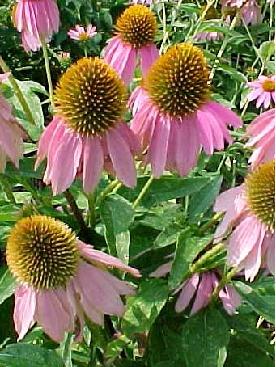 |
| Kim's Knee High * |
|
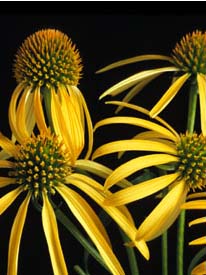 |
| Mango * |
|
 |
| Magnus * |
|
 |
| Orange Meadowbright * |
|
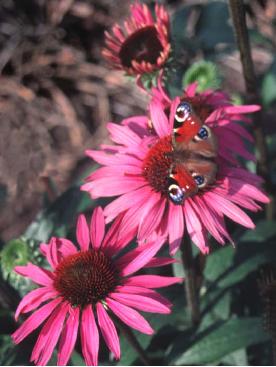 |
| Rubinstern |
|
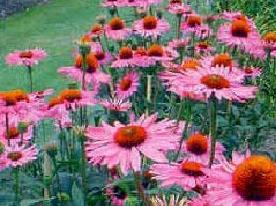 |
| Ruby Giant |
|
 |
| Ruby Star |
|
 |
| Sundown * |
|
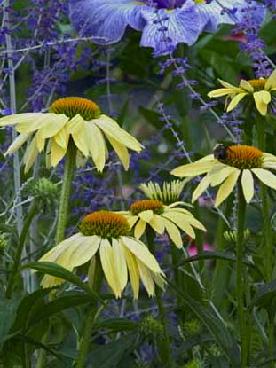 |
| Sunrise * |
|
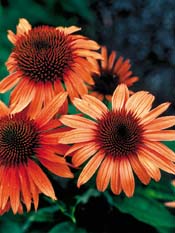 |
| Sunset * |
|
 |
| White Swan * |
|
|
|